On Saturday 17th March 2016 UK public woke up to bit of a shock. 8 UKMON stations ( Church Crookham, Clanfield, Wilcot, Norman Lockyer, Natural History Museum and even Scotch Street station in Northern Ireland ) at 3:16AM captured -14 mag fireball over South of England.
The International Meteor Organization (IMO) received over 45 public reports so far about a fireball spotted also by French and Belgian networks. Public described the event as a very bright fireball (bolide) with a green tint, since then UKMON team named this event as St. Patrick’s Day Fireball.
UKMON network has been in operation for 4 years with 23 operational cameras and this was the brightest meteor recorded up to date. Videos from their cameras have been promptly posted on UKMON website and Twitter.
Great deal of work has been performed by EDMOND team and Jakub Koukal in particular, calculating the orbit, atmospheric path and deceleration fit from fully saturated cameras.
Manually corrected images showing the meteor trail:
Team quickly calculated ground map and orbit
From the graph we can confirm nothing could have survived because of high terminal velocity at 26.6 km/s at 38.8 km.
And finally Jakub prepared initial mass calculation table.

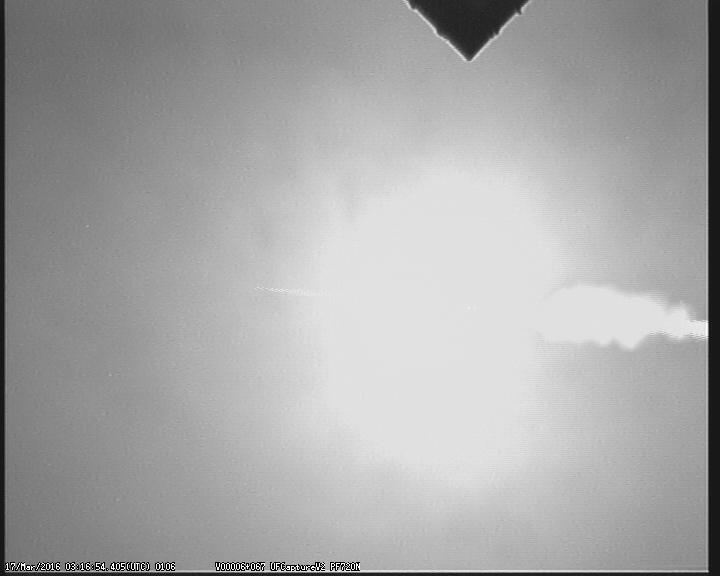
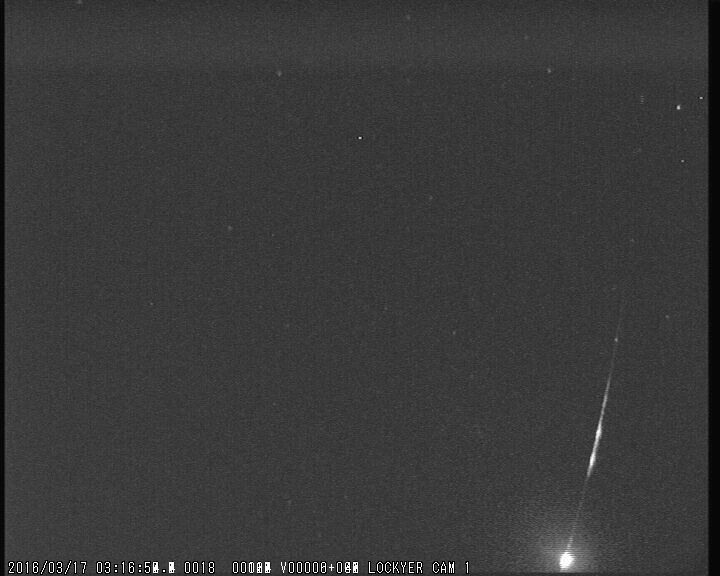
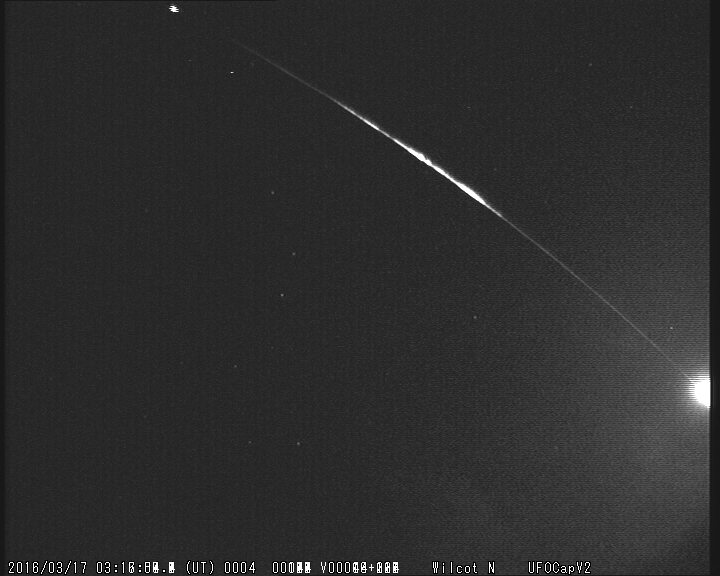
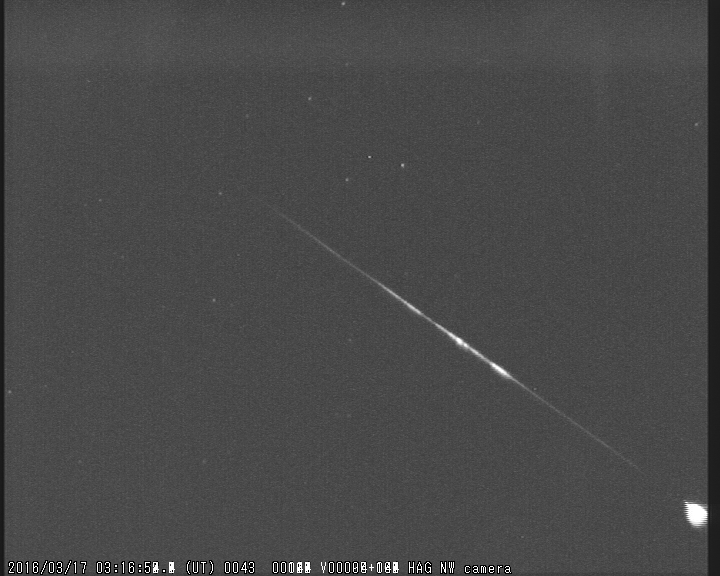
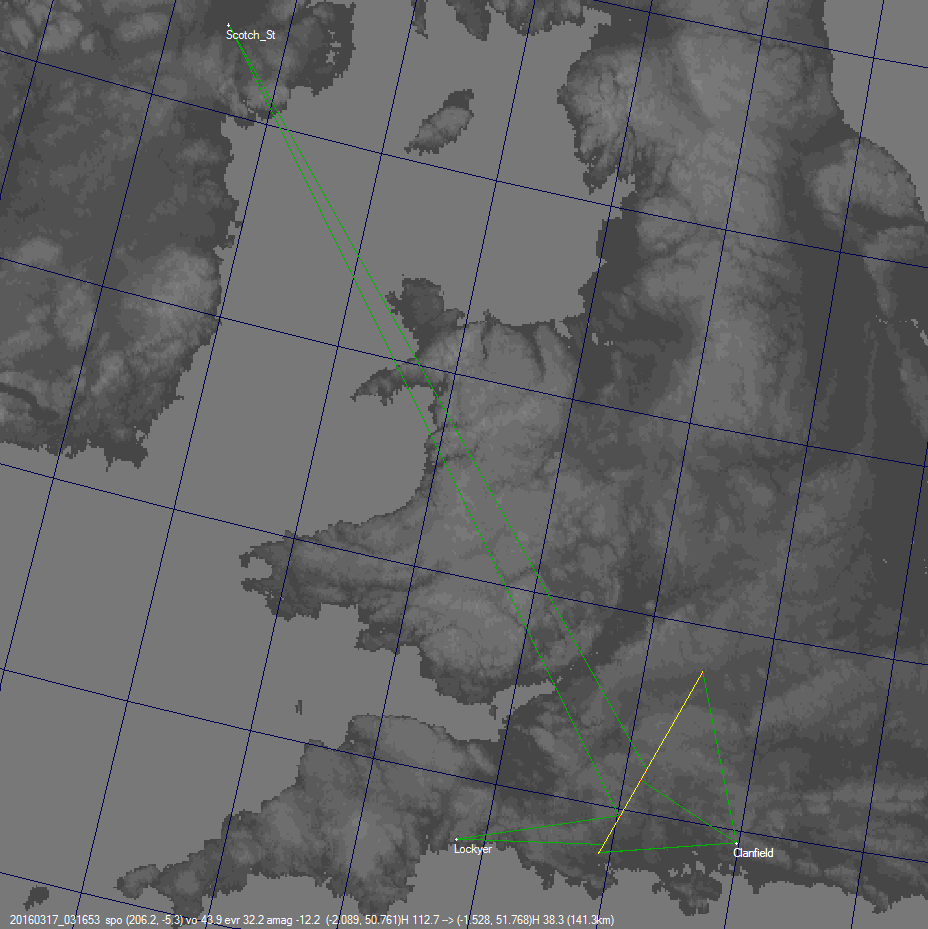
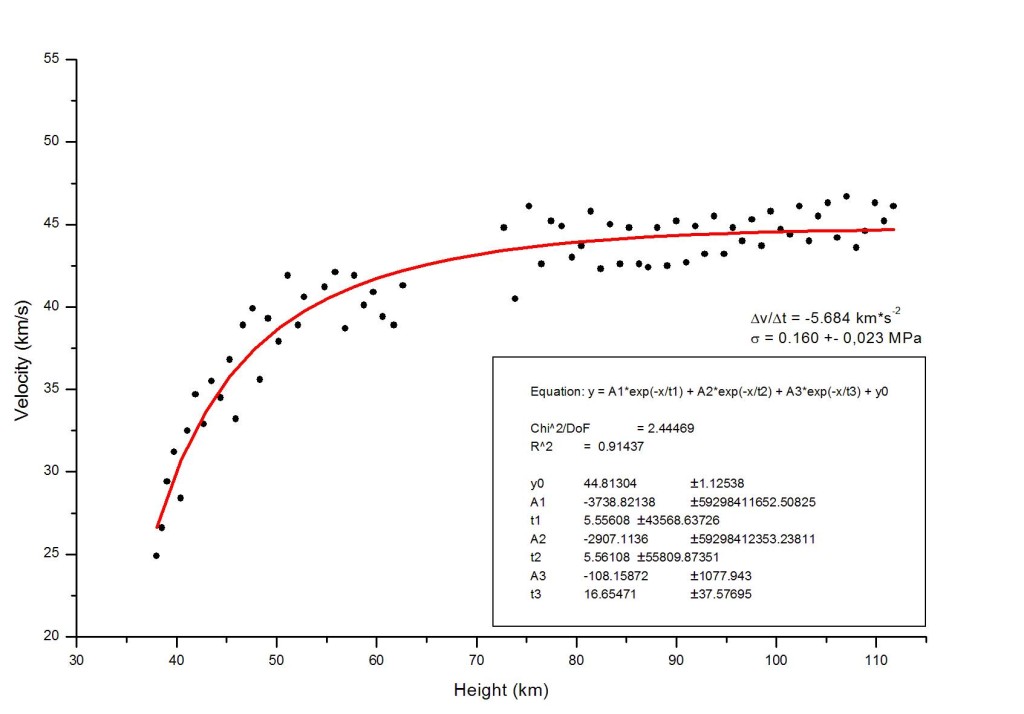

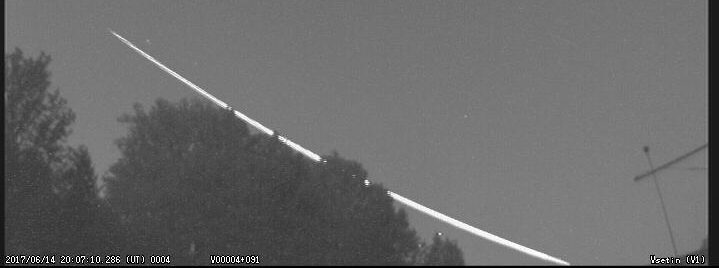
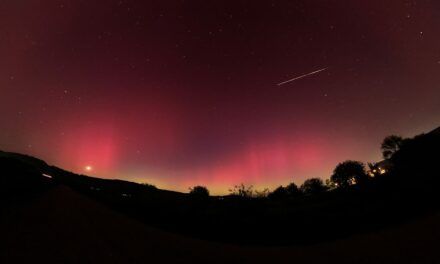
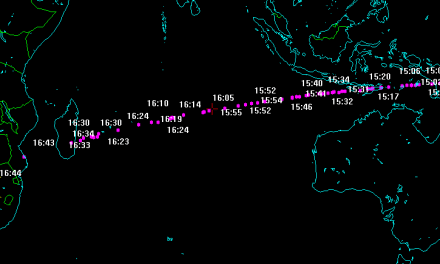
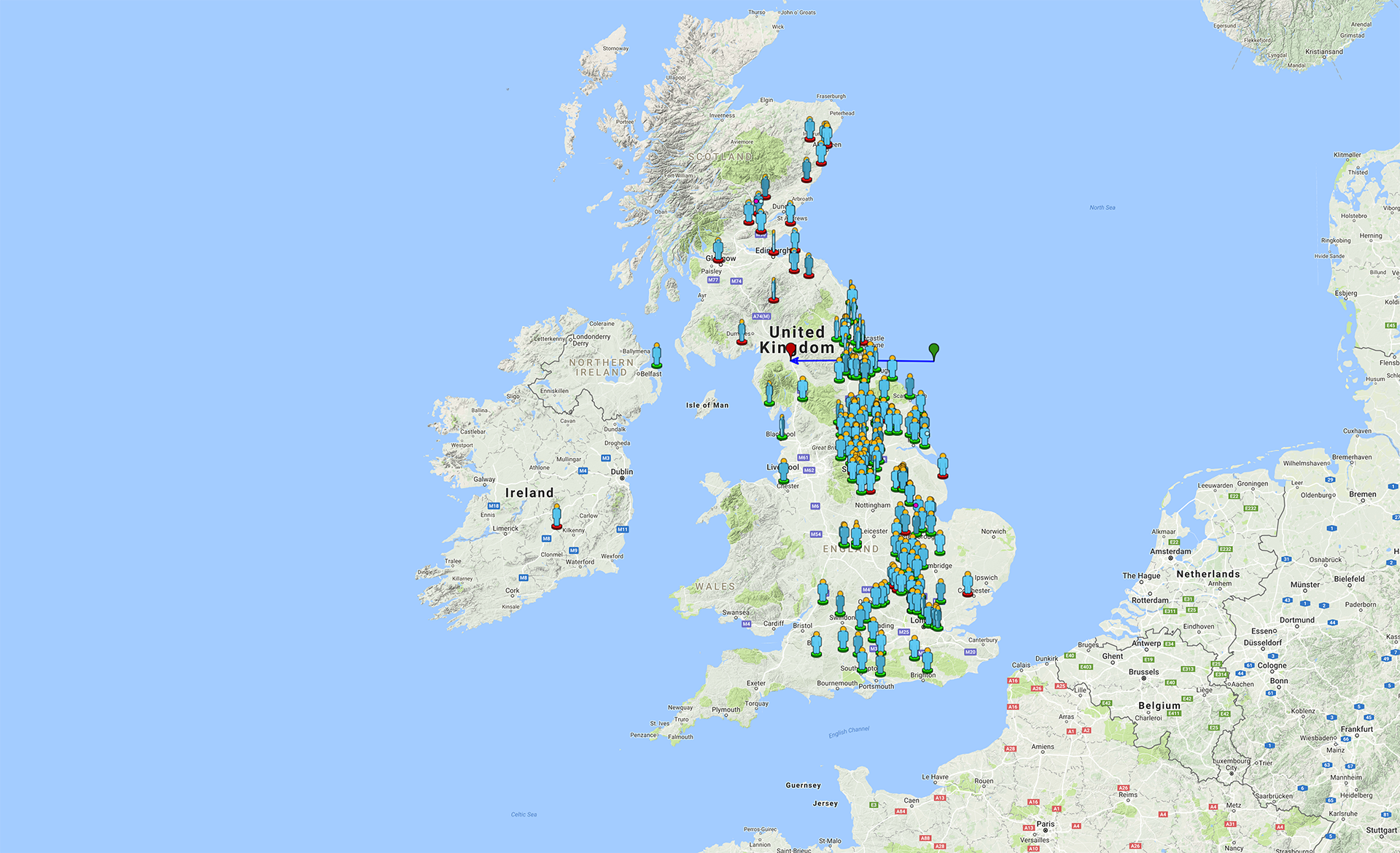

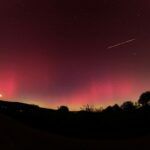
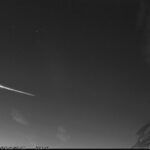


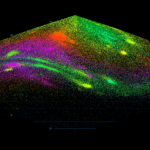
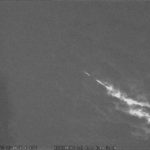
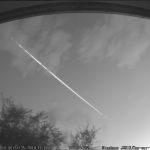

Hi there,
during inspection of my link list I find another videos with St. Patrick´s Day fireball. Click here http://star.herts.ac.uk/allsky/index.php?c=1 and see stations Bayfordbury @March 16 and Hemel @March 16. There are 2 frames with that amazing fireball.
Both cameras operated by University of Hertfordshire.